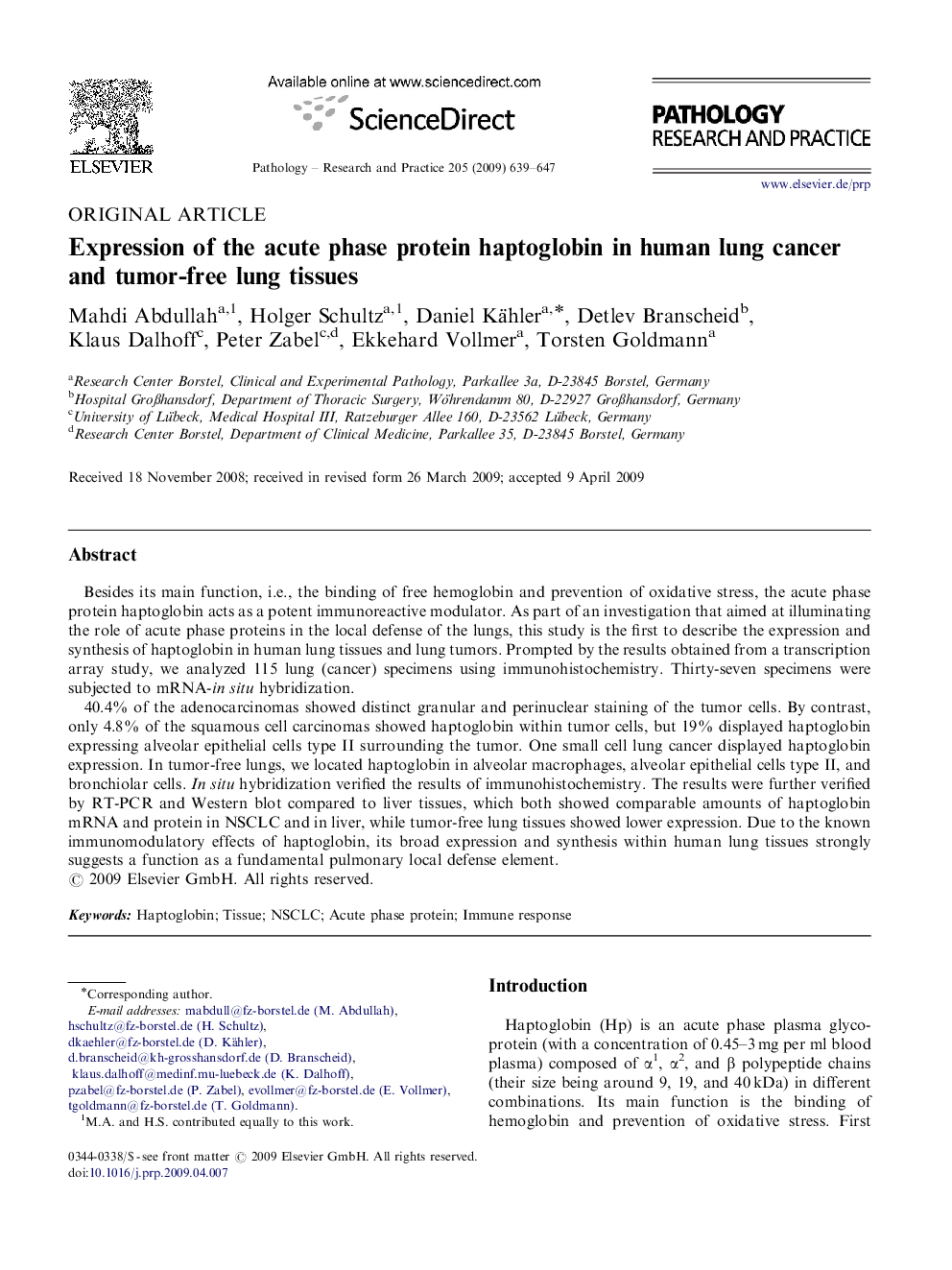| Article ID | Journal | Published Year | Pages | File Type |
|---|---|---|---|---|
| 2156529 | Pathology - Research and Practice | 2009 | 9 Pages |
Abstract
40.4% of the adenocarcinomas showed distinct granular and perinuclear staining of the tumor cells. By contrast, only 4.8% of the squamous cell carcinomas showed haptoglobin within tumor cells, but 19% displayed haptoglobin expressing alveolar epithelial cells type II surrounding the tumor. One small cell lung cancer displayed haptoglobin expression. In tumor-free lungs, we located haptoglobin in alveolar macrophages, alveolar epithelial cells type II, and bronchiolar cells. In situ hybridization verified the results of immunohistochemistry. The results were further verified by RT-PCR and Western blot compared to liver tissues, which both showed comparable amounts of haptoglobin mRNA and protein in NSCLC and in liver, while tumor-free lung tissues showed lower expression. Due to the known immunomodulatory effects of haptoglobin, its broad expression and synthesis within human lung tissues strongly suggests a function as a fundamental pulmonary local defense element.
Related Topics
Life Sciences
Biochemistry, Genetics and Molecular Biology
Cancer Research
Authors
Mahdi Abdullah, Holger Schultz, Daniel Kähler, Detlev Branscheid, Klaus Dalhoff, Peter Zabel, Ekkehard Vollmer, Torsten Goldmann,
